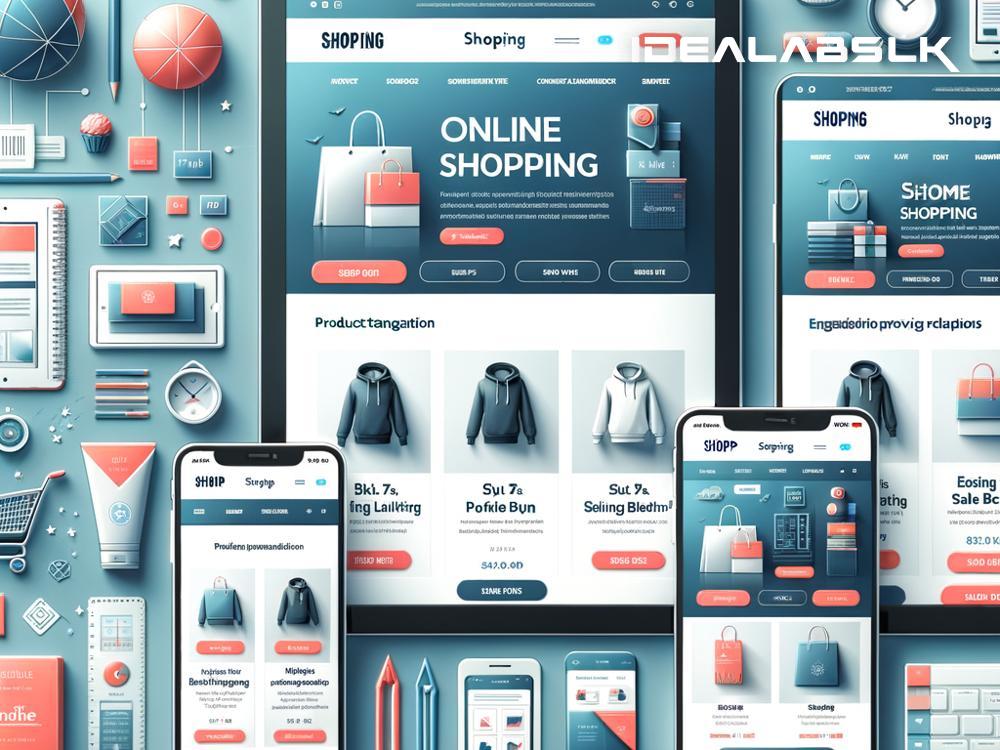Optimizing UX for E-commerce Websites: A Simple Guide
In the digital age, where online shopping has become the norm, e-commerce websites stand at the forefront of innovation and competition. User experience (UX) plays a pivotal role in keeping your online store ahead of the curve. But how exactly do you optimize UX for e-commerce websites? Let’s break it down into simple steps.
1. Understand Your Users
First things first, knowing your users is crucial. Who are they? What do they like? How do they browse? Use tools like surveys, user interviews, and analytics to gather data. This insight helps in creating a design that resonates with your target audience, making their shopping journey smooth and enjoyable.
2. Speed is Key
In a world where patience is thin, the speed of your website can make or break the user experience. A slow-loading site will send your visitors packing before they even see what you have to offer. Optimize images, leverage browser caching, and minimize HTTP requests to boost your site speed. Remember, faster is always better in the e-commerce world.
3. Mobile Optimization is a Must
With the majority of internet users browsing on their mobile devices, having a mobile-optimized site is non-negotiable. A mobile-friendly website should not just shrink to fit the screen but offer a seamless shopping experience tailored for smaller devices. This means large buttons, easy-to-navigate menus, and touch-friendly interfaces.
4. Simplify Navigation
Imagine walking into a store with everything scattered and no signs - frustrating, right? Similarly, a complicated website navigation can deter users from finding what they need. Keep your site’s structure simple and intuitive. Use clear categories, filters, and search bars to help users find products quickly. The easier it is for customers to find what they’re looking for, the happier they'll be.
5. High-Quality Images and Descriptions
Online shopping removes the ability to touch and feel products. Compensate for this by using high-quality images and detailed descriptions. Showcasing products from various angles and including zoom-in functionality can provide a closer look. Accurate and comprehensive product descriptions help fill in the rest of the details, ensuring customers know exactly what they’re buying.
6. Streamline the Checkout Process
A complicated checkout process is one of the primary reasons for cart abandonment. Streamline the process by asking only for essential information and providing clear instructions at each step. Offer multiple payment options to cater to different preferences, and always include a progress indicator to show customers how far they are from completing their purchase.
7. Trust and Security
Trust is paramount in the virtual shopping environment. Display security badges, SSL certificates, and make your privacy policy easily accessible to reassure customers their data is safe. User reviews and ratings also add a level of trustworthiness to your products and store, encouraging new customers to make purchases.
8. Continuous Testing and Feedback
Optimizing UX is not a one-time task but an ongoing process. Use A/B testing to compare different versions of your site and see what works best. Collect feedback directly from users through surveys or feedback forms. Monitoring how changes affect user behavior can guide further improvements.
9. Personalization
In the world of e-commerce, personalization can set you apart from the competition. Use data analytics to offer personalized recommendations, deals, and content based on previous interactions. Addressing users by name and remembering their preferences makes the shopping experience more engaging and increases the likelihood of repeat visits.
10. Exceptional Customer Service
Lastly, excellent customer service is a critical component of a great user experience. Include a clear and easily accessible FAQ section, a live chat feature, and multiple contact options. Being there to assist your customers when they need help not only solves their problems but also builds loyalty.
Conclusion
Optimizing UX for e-commerce is about putting your user’s needs at the heart of your design. It’s about creating a swift, seamless, and pleasant shopping experience that keeps customers coming back. By understanding your audience, simplifying navigation, prioritizing speed and mobile optimization, and continually testing and refining your site, you can take significant strides in improving your e-commerce UX.
Remember, the world of e-commerce is ever-evolving, and so should your website. Stay updated with the latest UX trends and technologies, and never stop optimizing. Your efforts will not only lead to a better shopping experience but also contribute to higher conversions, increased sales, and sustained business growth.

